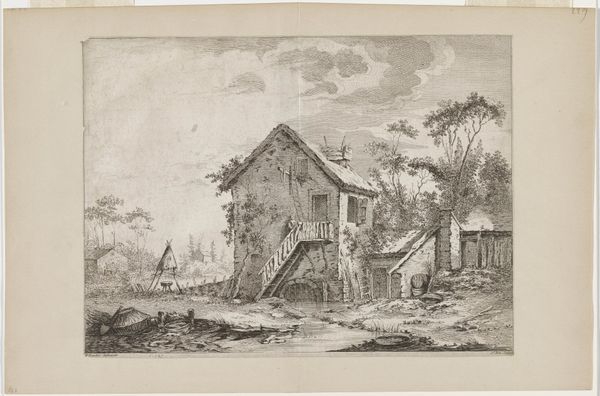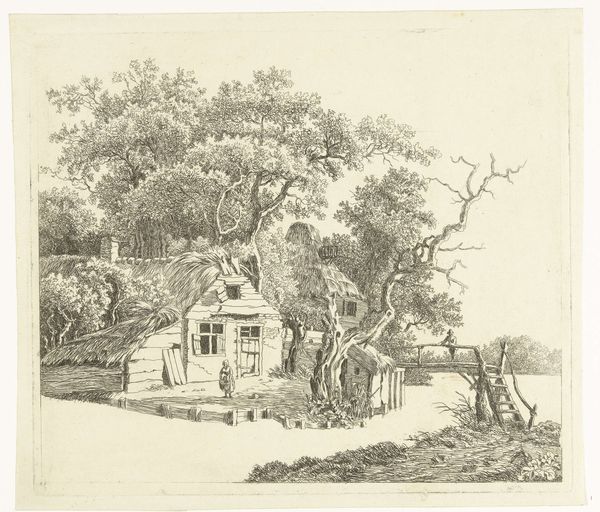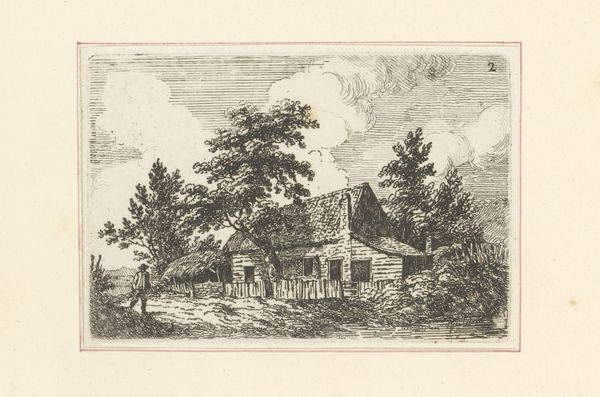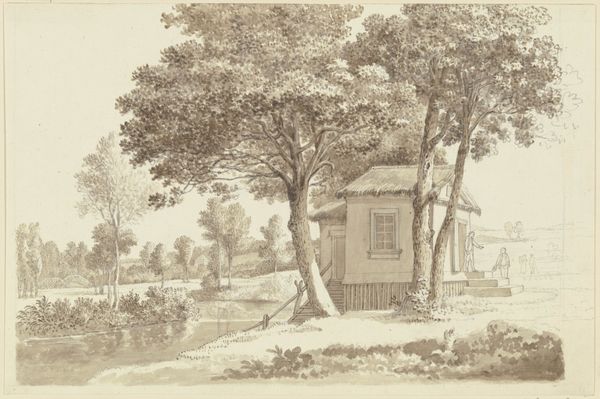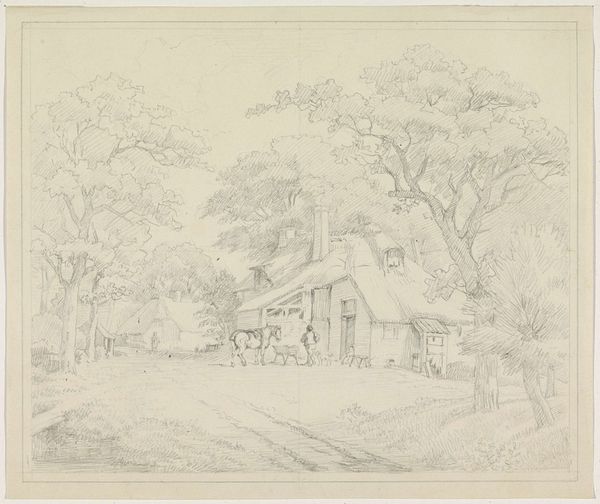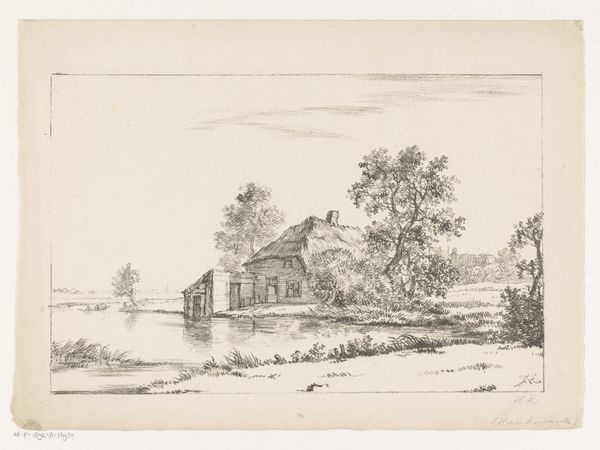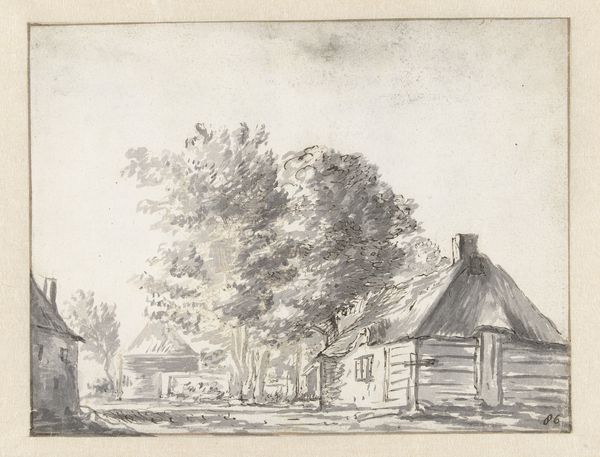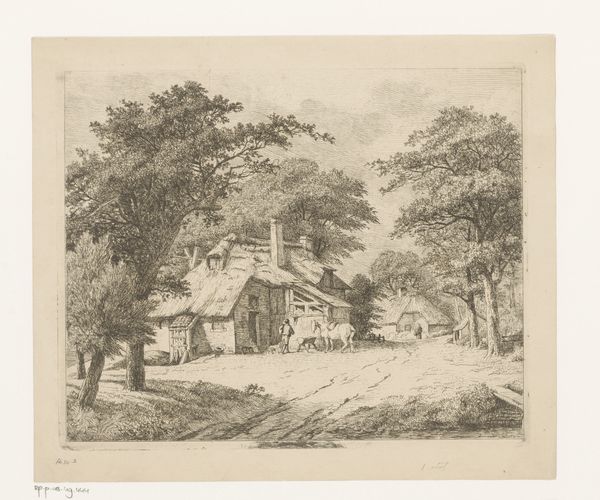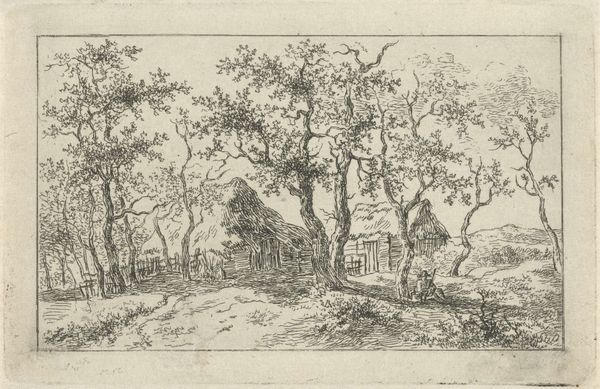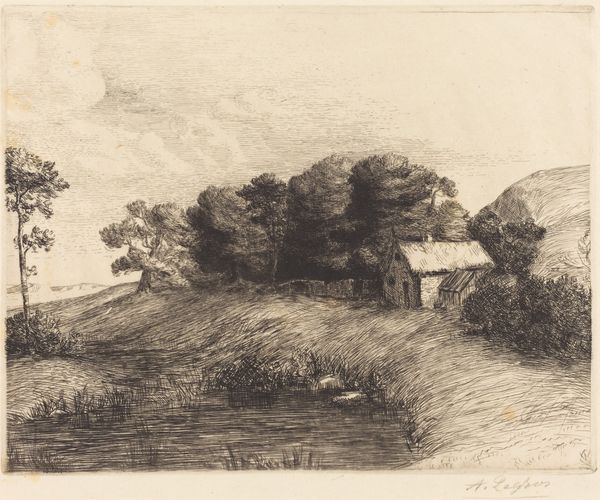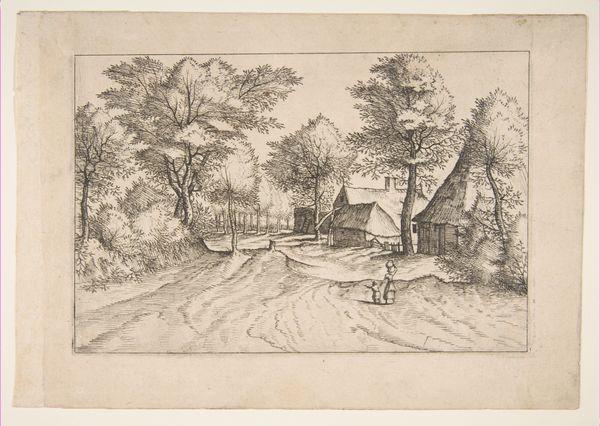
drawing, paper, ink, woodcut
#
drawing
#
landscape
#
paper
#
form
#
personal sketchbook
#
ink
#
woodcut
#
line
Copyright: Public Domain
Curator: I find myself immediately drawn into the tranquility of this little scene. There’s an intimacy created by the sharp, delicate linework that builds up these complex forms. Editor: Indeed. Here we have "Hut and groups of trees," a drawing attributed to Franz Kobell, a study rendered in ink on paper. What I find captivating is how a seemingly simple drawing invites contemplation about rural life and our connection to the environment, reflecting ideas of simplicity and natural beauty in times when the land was experiencing changes due to urbanization and evolving property relations. Curator: Note how Kobell organizes the space—the solid vertical tree against the angles of the hut. This relationship directs our gaze to wander over the rest of the composition. Semiotically, each mark feels decisive and efficient; it’s an exploration of structure itself! Editor: I see those structures too, but more than that, I wonder who lived there and how rural dwellers connected with the political landscapes that existed during Kobell's lifetime. Were they connected at all? Curator: Regardless, he renders nature meticulously. From an objective perspective, notice the use of hatching to generate a tonal spectrum from dark to light, as well as that dense, chaotic yet deliberate crosshatching. Editor: Agreed. Crosshatching served not only to produce tone, but also a social commentary. Peasants often were born into conditions of hard labor and were tied to the land to cultivate it—these lines and hatching resemble that type of hard work that never really ends. Curator: Absolutely. And by examining those intricate lines, we can see the way formal construction provides deeper narratives of its relationship with the landscape. Editor: Ultimately, for me, this drawing connects our understanding of art, daily existence, nature, and broader social realities—Kobell asks us to confront assumptions that intersect in unexpected yet illuminating ways. Curator: Well put! Studying line and form ultimately brings us to diverse conclusions that both examine structure and expose the socio-historical realities of those times.
Comments
No comments
Be the first to comment and join the conversation on the ultimate creative platform.
